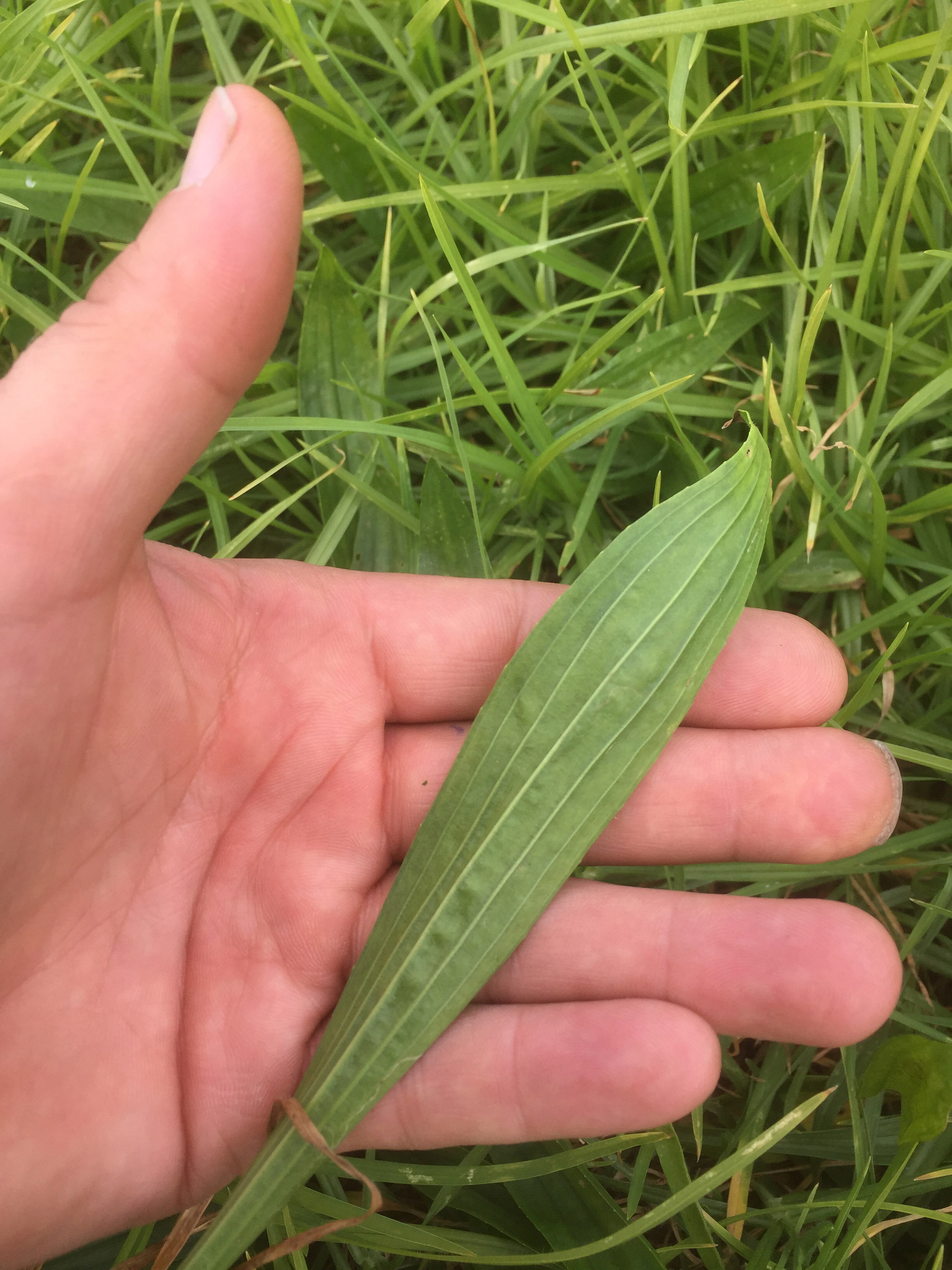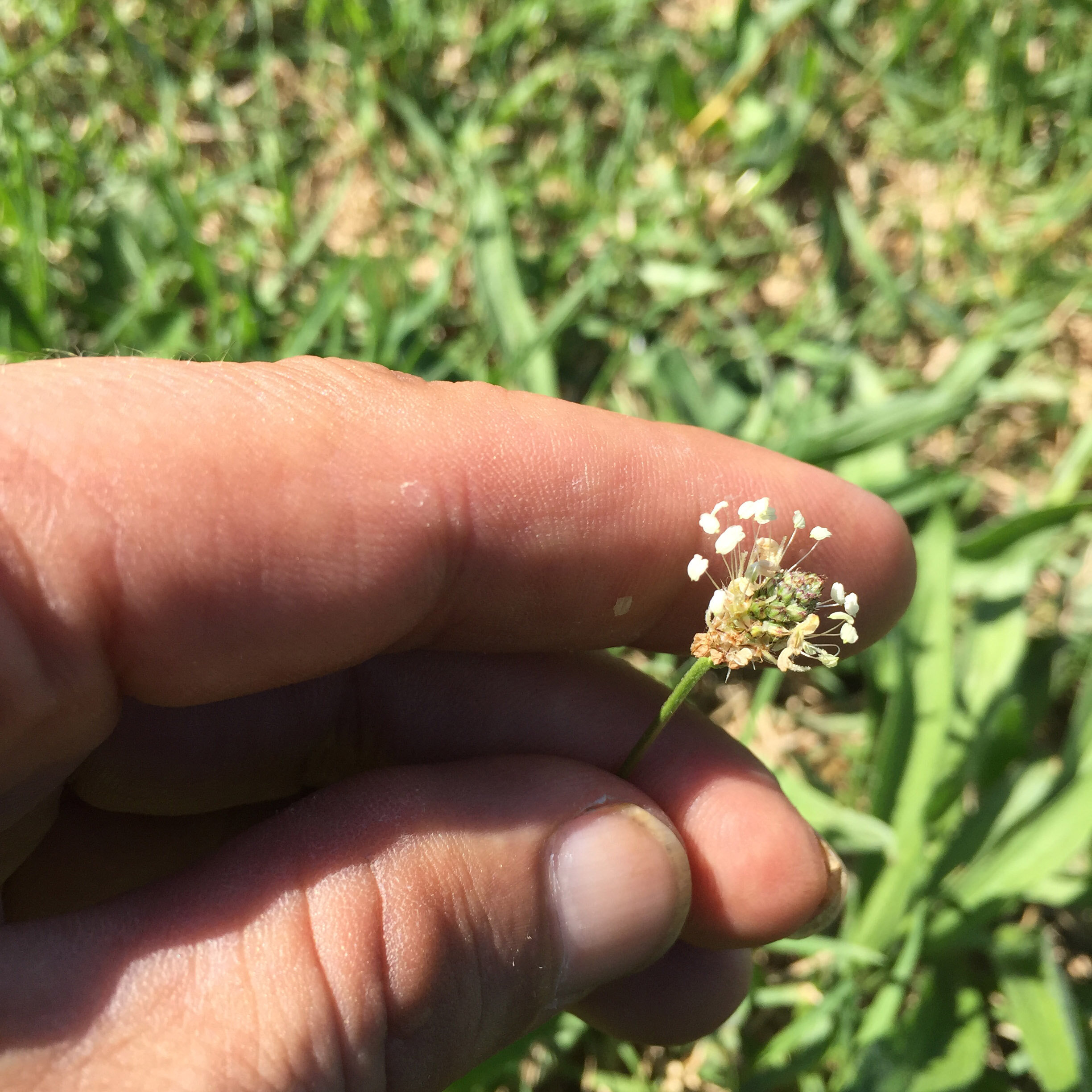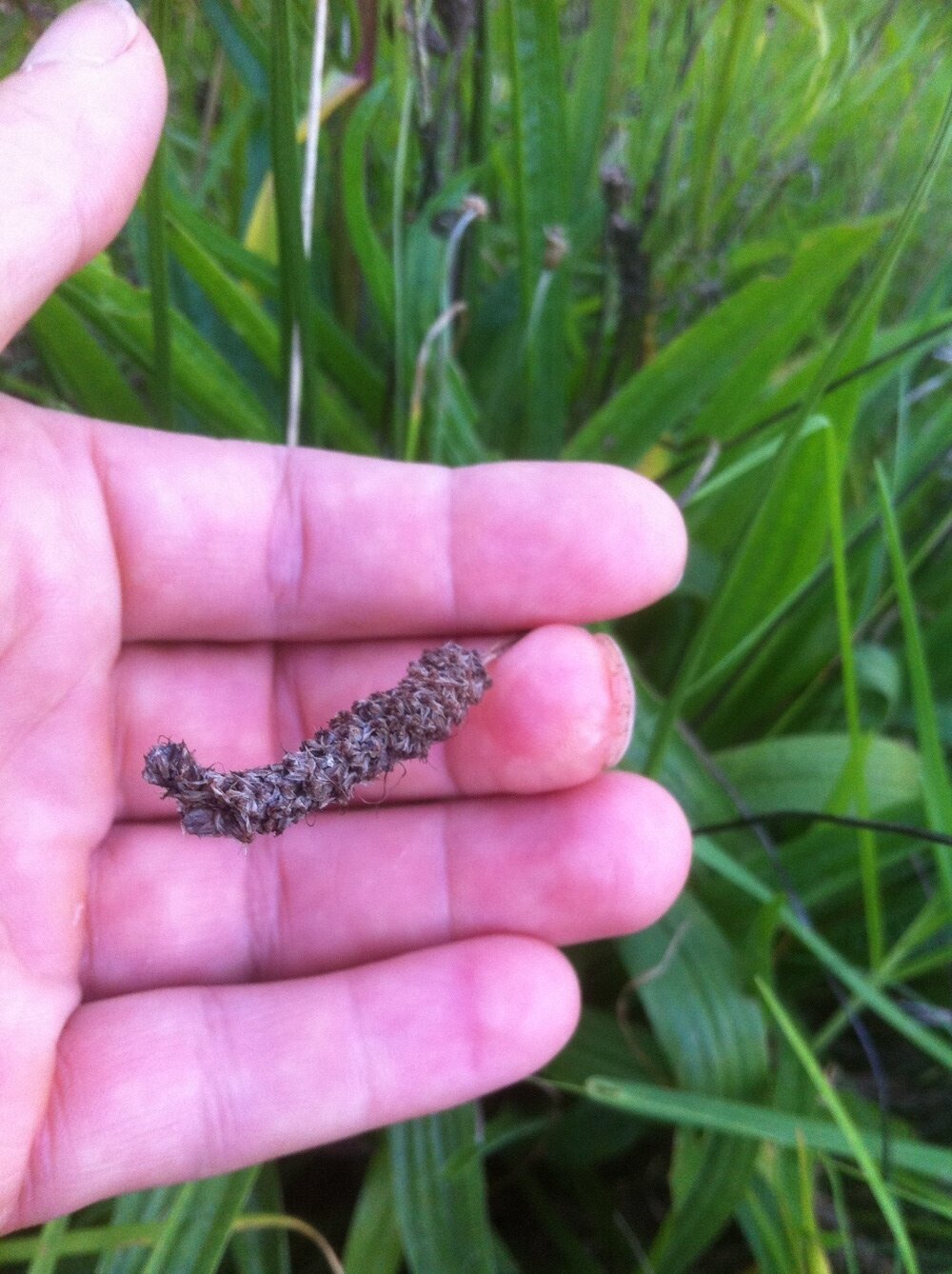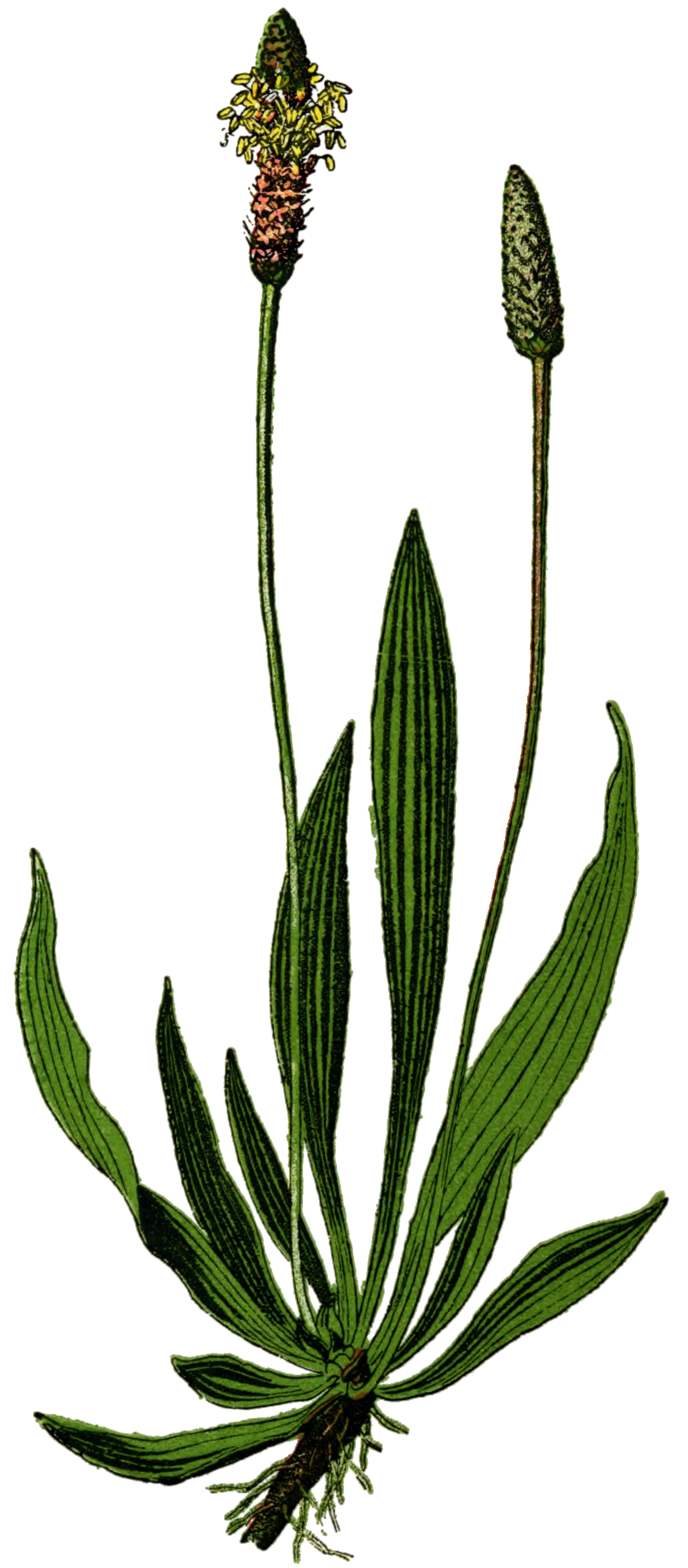BEHOLD PLANTAIN, for there is more to tell.
How to ID and use plantain, the wonder medicine right outside your door.
Allow me to start with an old story of Celtic folk lore and divination. The story goes, that a boy and a girl can predict their good fortune in love by collecting two kemps (the flowering spike of ribwort plantain) and placing them under a rock.
Two spikes—one to represent the lad, the other the lass—are plucked when in full bloom, and after all other blossoms have been carefully removed, the kemps should be wrapped in a Dock-leaf and laid under a stone. If the spikes shall have again blossomed when visited the next morning, the popular belief is that there will be “Aye love between them twae.”—
Did you like that? There are so many more folk stories about this herb, as is one of the plant-friend since forever.
Plantain (Plantago spp.) is a common weed all over the world. Here in Australia, it grows everywhere, all the way up to the subtropics (see map below).
Image from Australian Living Atlas
The most common of the family is ribwort plantain (Plantago lanceolata) that grows wherever there’s space. Highly adaptable, it can withstand full sun and degraded soils. It survives foot traffic and indeed it is most likely to grow where other plants cannot, along the pathways of the world.
This peculiarity has granted it a number of names, like waybread and wayfarer in English, or its scientific name, Plantago, referring to the plant of the feet, for the shape of the leaves, because it grows where it is stomped upon but also because it was customary practice for the pilgrims to insert plantain leaves in the inner soles to aid weary feet when travelling.
There are also a number of native plantains, like Plantago cunninghamii or Plantago debilis, much respected as both food and medicine in western NSW and known as bush bandaid or native porridge. Aboriginal people bruise the seeds and mix them with water to create a satisfying and filling meal. (T. Low Wild Food Plants of Australia)
Other plantains of note are broadleaved plantain (Plantago mayor) mostly found in water-logged environments, and Buckhorn plantain (Plantago coronopis) quite common in coastal areas where it can withstand salty conditions.
All of these are food and medicine (and good match-makers apparently)
How to identify plantain.
Plantains have a variety of leaves, ranging from the narrow lance-like leaves of ribwort, to the oval, long stalked leaves of broadleaf plantain to the stag-antler look of buckhorn plantain. The common feature of all is the flowering spike that springs up on a long stalk with insignificant flowers on top, somewhat resembling a microphone (see images).
A distinguishing feature of the plant is in the leaves, which have five to seven parallel lines going up the full lenght.
Once, a Chilean lady told me that in her country the plant is known as siete venas (seven veins) because if you count the ribs you will see that there are seven veins. That said I have found plenty of leaves that only have five veins, but we should not let numbers get in the way of a good story…
Have a look at this short video showing the veins of the plant>>
The plant is extremely adaptable, growing low in the lawn (cleverly adapted to lawnmowers hehehe) or tall if it grows amongst tall grass.
It is such a common sight that it is regarded as one of the most probable plants to find in the middle of nowhere, left and right of the track, making it a very important plant in survival situations: edible, medicinal, available everywhere.
Plantain as food.
Plantain is not the best food, the leaves being coarse, highly fibrous and somewhat bitter in taste. It is best to select young leaves and blanch them, or cook them thoroughly before enjoying. A famous recipe (found in several books) consists of frying the plant for half hour!
“Select the young leaves at the centre of the plant. Wash and dip them into a batter of milk, egg and cracker crumbs of flour. Fry these leaves over a low heat for about half an hour, salting them during the cooking process. The resulting plantain ‘chips’ can be enjoyed both warm and cold.”
Plantain as medicine
Plantain is an effective treatment for bleeding, it quickly staunches blood flow and encourages the repair of damaged tissue. The leaves are used in the treatment of diarrhoea, gastritis, irritable bowel syndrome, haemorrhoids, cystitis, bronchitis, catarrh, sinusitis, asthma and hay fever. They are used externally in treating skin inflammations, malignant ulcers, cuts, stings etc. A distilled water made from the plant makes an excellent eye lotion.
I use plantain together with chickweed in a skin salve, see here for the full recipe, as an emergency bandaid when out camping, foraging or anytime I’m out, I cut or scratch myself, I find plantain, bruise it and apply it to the wound. I also use plantain for the preparation of cough syrup, both by itself and with horehound.
Plantain Cough Syrup
Collect 200g of young ribwort leaves, make sure you pick young and healthy-looking leaves.
Wash and chop into small pieces,
Boil for 30 min in 1/2 l of water,
Let it cool and then strain the water through a cloth (it is good practice to get yourself a muslin cloth for this).
Mix in on slow heat 1:1 sugar until dissolved.
Fill into a clean bottle while it’s still hot.
When it cools down it will be thick sweet syrup.
Take 3 to 5 tablespoons throughout the day. Keeps for at least a year in the fridge.
Please note that if you intend to harvest a plant for medicinal uses it is advised to only ever harvest healthy specimen. Think about it. If the plant looks dead and struggling it would not have much to offer, would it?
And following from that, please note that I do not intend to come across as a medical practitioner or giving medical advise, but rather I am just passing on age-old knowledge. Any book at the library would provide plenty of information about this plant. Do your research, empower yourself with knowledge and enjoy your weeds folks, they have been around us for a long time, and they're here to stay.
Plantain and humans.
I am a great advocate to facilitate fun times with kids and plants, as that is where respect for botany starts. Simple games can make the whole difference in how we perceive species around us. There is a game played all over the world, which in Scotland is called ‘The 1 o’clock gun’. You pick up a plantain stalk, turn around on itself and pull. The seed head will shoot like a missile.
Reference.
Prota https://uses.plantnet-project.org/en/Plantago_lanceolata_(PROTA)
Plant for a future http://pfaf.org/user/Plant.aspx?LatinName=Plantago+lanceolata
Wikipedia http://en.wikipedia.org/wiki/Plantago_lanceolata
Science Direct https://www.sciencedirect.com/science/article/pii/S0378874100002129
Disclaimer: This information should be used as a guide only. It is not my intention to advise anyone on medical conditions, rather I'm just presenting a new way to look at the plants growing in your yard.
Let me help: if you are unsure about the identification of your plants tag me in a picture or comment below, and I’ll endeavour to help.
If you would like a book detailing 16 of the most common edible weeds in your garden with big colourful images, look here> only $15 + postage.
Or, if you’re in Sydney, you might want to look at our Edible Backyard Mapping services. I come to your garden be it big or small, identify the plants of value and provide you with a full report. Check it out>










